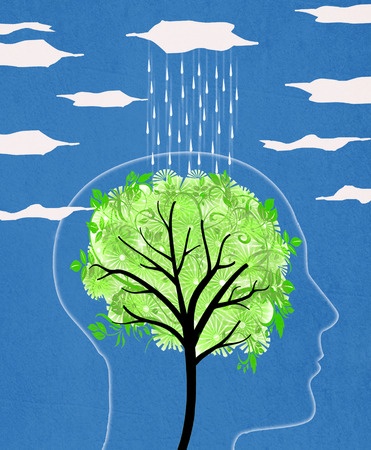Do you overthink everything, even venturing into what would be called “rumination?” Get out! In nature, I mean. In a recent article (Nature experience reduces rumination and subgenual prefrontal cortex activation) scientists have proposed an explanation for what we’ve known all along – spending time in nature is relaxing, rejuvenating and healing. Perhaps it’s because it directs brain activity and blood flow away from the subgenual prefrontal cortex also known as Brodmann’s Area 25 or the subgenual anterior cingulate cortex, which serves as a gateway between the thinking prefrontal cortex and the feeling limbic system of the brain. When the “gateway” doesn’t work properly, it can be a major player in various forms of depression. Even without clinical depression, the subgenual prefrontal cortex is thought to be involved in rumination, “a maladaptive pattern of self-referential thought that is associated with heightened risk for depression and other mental illnesses.”
I think we’ve all gotten ourselves lost in rumination at one time or another, and it’s good to know that walking in nature takes us out of it in a relatively short amount of time. The participants in this study showed significant changes after a 90 minute walk. This didn’t happen with a similar walk through an urban environment, which is important to know because 50% of the world’s population lives in an environment classified as urban now and it’s predicted that 70% will be urban-dwelling by 2050. We will need to prioritize this need for exposure to natural environments in our urban planning, or suffer the consequences in a very real health-related way.
We’ve been aware of the healing power of nature here in Sedona, of course. That’s one of the main reasons we live here! But it is interesting to see the benefit so clearly revealed with a simple form of brain imaging. If you are feeling low, like you are the center of the universe, and not in a good way (for example “everything I do turns out badly,” or some variation on that theme), go for a walk in nature. I guarantee you’ll see things differently upon your return, and this study helps us to understand why.
If you are looking for a good hike in Sedona, here are a few of my very favorites!
Your email address will never be shared



